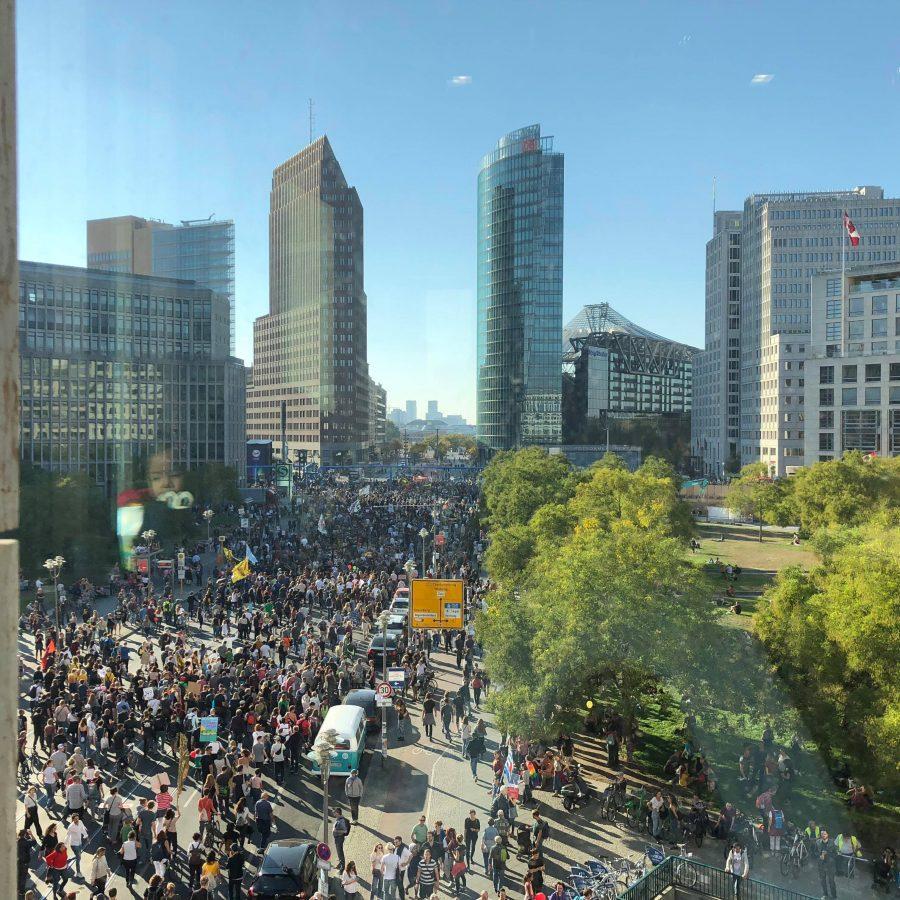Dancing through the crowded streets of Berlin to the techno beats radiating out of a flatbed covered in posters and banners, you truly understand why Berlin is different from any other city in the world. On Oct.13, the major streets in Berlin are cordoned off for an eclectic group of protesters, who are demonstrating due to concern over Germany’s growingly confident far right. Everyone is holding a placard or poster, some fastened to a wooden spoon; each has a different call to action. Be it “No beer for NAZIs,” or “Grandmas against the right,” they are all colorful and held with a purpose, and their human extensions are humming, dancing, singing and marching.
No one is screaming, no one is pushing — you feel at ease amongst the group of over 150,000 protesters.
You decided on a whim to join the demonstration in solidarity with the other protestors, without a single cause to champion. But as the crowd moves in tandem, the true meaning of the protest becomes clear. The signs that have been decorating the city’s subway stations and walls for the past week show two hands, one red and one blue, clasping one another with the phrase “#unteilbar: Solidarität statt Ausgrenzung.” Indivisible: Solidarity instead of exclusion. You realize even without a banner, you march for the exact same reason as the person next to you, behind you and in front of you: solidarity.

Passing the yellowing pruned trees, the cement hotels and baroque bureaucratic buildings, Berlin is transformed. The faces passing by you are young and old, goth and business. Every juxtaposition personified, and yet they dance together with their amalgamation of signs, fighting for solidarity. They don’t all have words, some only pictures. Others carry symbols of their plight — emergency blankets and life vests. People of various ages are carrying opened champagne bottles, sipping and singing “Here comes the revolution!”
You hear a loud pop in front of you and instinctively duck. Suddenly, a peal of laughter rises out of the crowd. A bottle of champagne popped by itself inside someone’s canvas bag. The line between festivity and rebellion is not clear. Bottles litter the sidewalk, a sight not unusual in Berlin.
The crowd leads you slowly ambling towards the Brandenburg Gate, a historic marker of Germany’s imperialist past. As you get nearer you see the heightened police presence, officers leisurely leaning against their trucks, alert but not on edge. The protestors mingle with the volunteers and officers, and children are handed balloons and pins. You smile as you step to the fringe of the group, observing the group as it moves and absorbs new members, indivisible in its size and morphology.
Email Jacqueline Kolhof at [email protected].


























































































































































